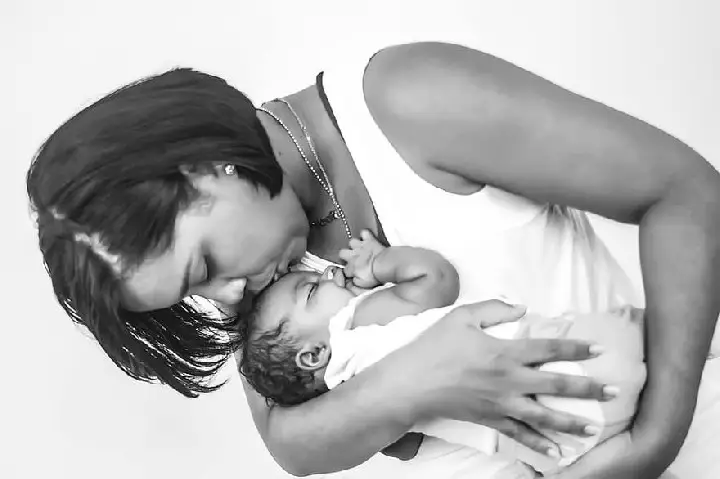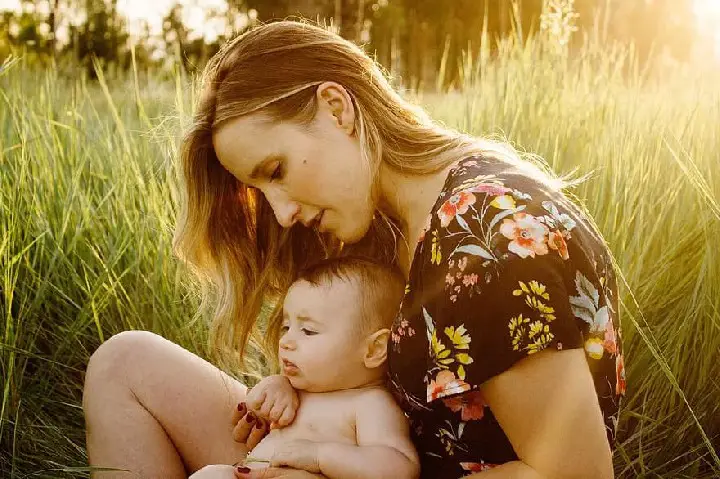
If you are a pregnant single woman in your mid-thirties or a recently divorced pregnant woman who is thinking about how to put a child up for adoption, you must understand how the process works. Maybe you have made up your mind, or you are just considering it as an option. Whatever your situation may be, please bear in mind that you are entering into a process that has many twists and turns. You must get a better perspective of what you and your soon-to-be-born child are getting into. Although you have an unborn baby, you can start the adoption process as early as possible. Then, you can set finalize the adoption right after birth.
According to a CDC estimate, fewer and fewer women placed their baby up for adoption since 1973, only 18,000 children under the age of 2 were placed with adoption agencies.
Getting the process started
The first thing that you need to do is to be clear that you are giving up your child for adoption. This fact cannot be assumed, or you cannot automatically “decide” on this path. Take note of what is at stake. Depending on the type of adoption you choose, you are giving up all of your rights to your child. Be aware of the kind of privileges that you are letting go of and be sure that you are okay with them. Read up as much as you can on all the legalities.
What follows is a practical step-by-step guide to putting up a child for adoption.
Get in touch with your OBGYN
The best person to contact once you have decided to put up your unborn child for adoption is your OBGYN. This specialist is a natural contact point for adoption agencies looking to get in touch with birth mothers who are considering placing their child with an adoptive family. Unfortunately, a lot of women overlook this fact. They go straight to an adoption agency. The problem is you are on your own at this point. You probably don’t even know much about the organization as well as their actual dealings with birth mothers. You get all that information and then some when you visit your OBGYN.
Not only will they evaluate your pregnancy and ensure that it’s progressing as expected, but they also have you and your child’s best interests in mind. Your OBGYN would know adoption agencies directly, or they’re in contact with other medical professionals who would know. This way you’re not taking a shot in the dark. You’re not just going with blind research. Instead, you’re getting a referral from someone who can vouch for the overall quality of the service you will get from the adoption agency. Regardless, make sure your OBGYN is always in the loop. If you are giving a baby to an adoptive family, you would want to make sure that he or she is going to be alright when delivered. Your doctor will provide you with sufficient guidance as far as your prenatal health goes to ensure that your baby is born healthy.

Call an Adoption Assistant
Adoption assistants are services you can call, explain your adoption-related issues to them, and they give you advice based on your peculiar needs. Be it Open or Closed adoption, they will guide you with your personalized adoption plan.
We keep a database of a kind, caring and compassionate adoption assistant services and they are available 24 hours a day, 7 days a week. Helped hundreds of birth mothers across the United States to successfully place a child for adoption.
They have helped countless birthmothers walk through the process of giving out their children for adoption and guide them along the way.
Best part? The call and consultation are totally free and at NO COST TO THE BIRTHMOTHER. Click to call them now.
Contact an adoption agency
You don’t necessarily have to get in touch with an adoption agency if you want to place a baby for adoption. There are several adoption professionals out there, but most people choose to reach out to an adoption agency because these are the most recommended by their OBGYN or other medical practitioners. Once you contact the adoption expert that you are comfortable with, they will walk you through the whole process. They will assist you through it, and you have the right to cancel at any time. Keep this in mind. Things do change. Maybe your circumstances took a turn, and you’re thinking twice about going through with the adoption itself. Perhaps your relationship with the biological father of your child went through some unexpected changes.
Whatever the case may be, when you contact an adoption agency, they will counsel you on your decision. They are not doing this because they feel like it, but they have to do this based on state laws. They are also mandated to explain to you the pros and cons of your upcoming decision. They will tell you about different scenarios to expect. After your consultation, you should have a relatively clear view of the choice you have to make. This step is vital for you to develop an adoption plan to follow until the process is concluded after birth. The agency can also help tremendously. This way, no step is skipped, and no detail is left off. Their other main duty is to serve families looking for how to adopt a child.
DOWNLOAD OUR FREE eBOOK FOR BIRTHMOTHERS
What does an adoption plan contain?
The plan of putting a baby up for adoption starts with establishing a connection with the adoption expert or agency. This move is a legal agreement between the birth mother and the organization acting as an intermediary for the process. At the very least, your adoption plan should have the following:
It addresses all your specific needs
If you are about to give birth, you are going to need living expenses as well as having the costs of your pregnancy and delivery taken care of. If you are in school, you might need assistance with that as well. In addition to these, you also have specific needs regarding your preferences for your baby’s adoptive family. Maybe you have partiality in terms of educational background or how much their income is. You may even have a priority as tor the kind of jobs the adoptive parents would have or if they’re in specific industries. Whatever the case, your choices play a significant role in selecting from the vast pool of prospects out there who have signed up for the waiting list.
Get the right counseling
A crucial part of your adoption plan involves professional advice from adoption specialists and counselors. They will guide you through each step and are always in touch.
Plan out the pre-screen process
Pre-screening narrows down the list of prospective adoptive parents based on your options. This step considers other basic guidelines like criminal background, child abuse convictions, mental and emotional issues, as well as other fundamental disqualifying factors.
Your adoption plan helps you get in touch with the birth father
When dealing with a child placement professional, they may also help you locate and contact the farther of your baby to get his consent. This part is crucial because, in individual states, the adoption process or even the legal adoptive status of your child could be in jeopardy if the birth father tries to gain custody of the child later on. There may be cases when an adoption process pushes through without the father’s consent and even their awareness. The best way is to make sure that he is informed that you are pregnant and are putting the child up for adoption. He also has to sign a waiver, but depending on the state you’re in, his consent might not be needed.
 Always remember that you are in control
Always remember that you are in control
Keep in mind that you can always cancel the process if you change your mind. Next, remember that the adoption process turns on your specific preferences when it comes to the adoptive family. Be as thorough as you can regarding the kind of family you want your baby to be placed with. You will be guided by your adoption professional closely through the development because they can spell out the standard factors other birth mothers consider. These may be whether the adoptive family is a small or a large family, where they are located, what kind of siblings if any, are involved, and if you prefer an open or closed adoption.
Part of the adoption plan is also preparing for your stay in the hospital. You still have control over the circumstances surrounding your delivery. Your options will include the presence of your own family or the adoptive family. You can set it up where you don’t see your child after it’s delivered to minimize any emotional anxiety on your end. Alternatively, you can arrange for the adoptive family to be there during the delivery to take pictures. Then you can physically give up the baby to them among other preparations. It all depends on what you want. Some women don’t want to see their children because they don’t want to establish a connection that will be hard to break. However, they know that the best thing to do for the welfare and interest of the child is to place him up for adoption. Other women prefer an open adoption relationship with the adoptive family, so there is a close and cordial connection initiated from the birth of the child.
Be clear as to what type of adoption you are looking for
You can also decide how much communication you have with the adoptive family throughout the adoption process and after it ends. You can meet them if you choose. This way, you get to know them and truly understand what they’re about and their ability to provide the right kind of home your child would thrive in. This part, of course, involves being physically introduced to the family so you can see them face to face. This way, you can get a reasonably good idea of what kind of people will become the legal parents of your child. You can then raise whatever purposes you may have about the post-adoption connection with them. Again, this is your call.
Maybe you want to always be in the loop. So even though the child knows that you are his or her birth mother, they are aware that he or she is a legally adopted child of their parents. If you prefer, you can have a no-contact agreement after a certain point. You can even dispense with the whole introduction process and just look through the paperwork as well as background investigation reports on the adoptive parents.
What to do after the completion of the adoption plan?
At this point, you can then focus on taking care of yourself and your baby. The good thing about deciding to contact an adoption agency early is that you have virtually forty weeks to execute your plan correctly. This period is enough time to solidify your reasons for giving up a baby and for the agency to do all the necessary paperwork and legal leg work to ensure everything is smoothened out by the time you are ready to give birth. When all else is laid out, you can then use this time to prepare to relinquish your rights to your baby. After delivery, you can work with the adoptive family to finish the legal process. If you chose an open adoption, you could continue to communicate with the family or to check up on your baby through the agency. These visits are set up by the adoption organization so you can look into how well your kid is doing after the adoption.




